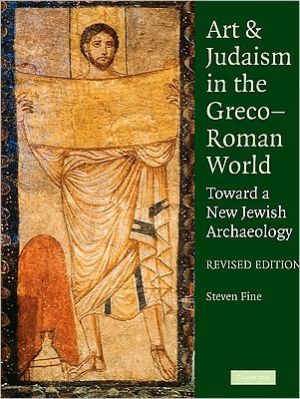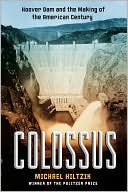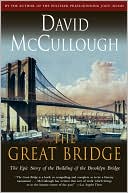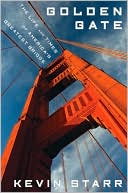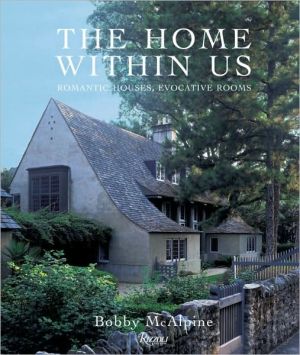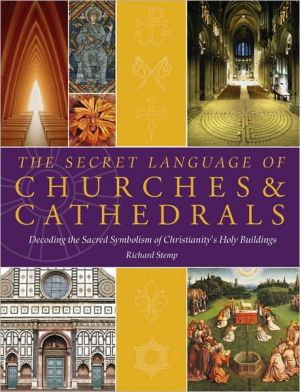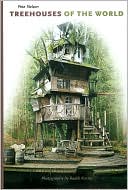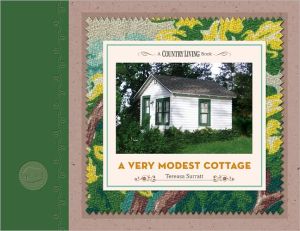Art and Judaism in the Greco-Roman World: Toward a New Jewish Archaeology
Art and Judaism During the Greco-Roman Period explores the Jewish experience with art during the Greco-Roman period—from the Hellenistic period through the rise of Islam. It starts from with the premise that Jewish art in antiquity was a "minority" or "ethnic" art and surveys ways that Jews fully participated in, transformed, and at times rejected the art of their general environment. Art and Judaism focuses upon the politics of identity during the Greco-Roman period, even as it discusses...
Search in google:
This book explores the Jewish experience with art during the Greco-Roman period.
\ Cambridge University Press\ 0521844916 - Art and Judaism in the Greco-Roman World - Toward a New Jewish Archaeology - by Steven Fine\ Excerpt\ \ \ \ \ INTRODUCTION\ \ \ \ JEWISH ARCHAEOLOGY IS A TERM THAT HAS BEEN USED VERY sparingly during the past half century. It was popular, however, during the period between the end of World War Ⅰ and the early 1950s. Jewish archaeology was used by Jewish scholars to describe ancient Jewish remains of the Greco-Roman period - from the ruins of Herod's Temple to ancient coins, synagogue remains, tombs, and villages. It was the Jewish equivalent of "Christian archaeology," a term commonly used in Catholic scholarship around the turn of the twentieth century. The hallmark of this Jewish archaeology was the placement of Jewish artifacts in dialogue with ancient Jewish literature, in the hopes of understanding more about Jewish culture than either the extant literary texts or excavated artifacts could yield on their own.\ "Palestinian" Jewish archaeologists Nahum Slouschz, Eleazar Lipa Sukenik, Hungarian Talmudist Ludwig Blau, and other Jewish scholars who engaged Jewish archaeological remains were an excited lot, dedicated to interpreting ever more dramatic discoveries within the full context of Jewish literature and history. Their scholarly output was prodigious, their discoveries significant. Bet- ween the two world wars, major discoveries, including most spectacularly the Na'aran and Beth Alpha synagogues and the Beth She'arim catacombs in Palestine and the Dura Europos synagogue in Syria, sparked heated scholarly discussion and publication programs. These scholars were determined to prove, once and for all, that Judaism and the Jews possessed a significant and meaningful visual culture in antiquity. They were successful.\ "Jewish archaeology" was the product of deep Jewish insecurity and - for some - profound national hope. Jewish scholars, Zionists and Jewish culturalists alike, were out to show that Jews, like all other nations, created beautiful and exciting art throughout their long history. The odds were high and from the beginning were stacked against them - at least in the Protestant world. Among Protestants, particularly in Germany, it was a "given" that Judaism was an "aniconic" and "iconoclastic" religion, devoid of art. Because the existence of a national art was an essential feature of nineteenth-century romantic nationalism, Jews who were committed to the maintenance of Jewish peoplehood needed the existence of a strong and vital "Jewish art."\ During the second half of the twentieth century, a very different ideological stance dominated American scholarly discussions of Jewish archaeological discoveries. Yale's Erwin R. Goodenough, Columbia University's Morton Smith, and some of Smith's students knew that ancient Jews did in fact "do art." Unfortunately, they did not grasp the full depth of what I call the "Jews don't do art" trope. They simply tempered its implications. They hence asserted that only the ancient rabbis were "aniconic" - or, at least, very troubled by art. The trope changed from "Jews don't do art" to "rabbis don't do art." This model informed much of contemporary American scholarship on ancient Judaism and revealed important distinctions within the late antique Jewish community, although these were sometimes overstated. This trope, which allowed Jewish archaeological remains to be used for the construction of "nonrabbinic Jews" as a distinct culture group in late antique Palestine, supports specific ideological perspectives within liberalizing elements of the contemporary American Jewish community. The construction of modern nonrabbinic Jews was thus provided with ancient roots. It is an excellent example of the ways that scholarship and ideology intersect in the study of ancient Judaism. In Art and Judaism in the Greco-Roman World: Toward a New Jewish Archaeology, I hope to finally lay to rest the last vestiges of the insidious (and often anti-Semitic or anti-rabbinic) trope of Jewish "aniconism" in antiquity by exposing its roots as it pertains to the Greco-Roman period. In this task, I build upon recent studies that that have analyzed this approach in scholarship in relation to later periods. To this purpose, I resurrect the term "Jewish archaeology" and the legacy of the early interpreters of ancient Jewish material culture while integrating more recent innovations in the study of antiquity - and particularly of ancient Judaism.\ Art and Judaism in the Greco-Roman World: Toward a New Jewish Archaeology builds upon the project of reading ancient Jewish texts, particularly rabbinic literature, in close conversation with archaeology. Great discoveries in both of these (usually) self-contained disciplines during the last century offer rich opportunities for dialogue and for better understanding the place of art in Judaism than has ever before been possible. This volume is divided into four parts. The first section, "The 'Most Unmonumental People' of the World": Modern Constructions of Ancient Jewish Art," sets out the history of this discipline through a series of case studies. I begin by discussing nineteenth- and early-twentieth-century attitudes in Western Europe and America, both Protestant and Catholic, and how these influenced Jewish conceptions. This will be accomplished through the focal lens of one building and its architect, Arnold W. Brunner and his Henry S. Frank Memorial Synagogue in Philadelphia. The Frank synagogue, loosely modeled on the ancient Galilean synagogue of Kefar Baram by America's premiere Jewish architect of the period, is an excellent point from which to examine the situation before World War Ⅰ.\ I then turn to the Zionist context, exploring Zionist interpretation of ancient Jewish art and the implications of Zionist perspectives. Here I focus on the "first Hebrew excavation," carried out by Nahum Slouschz in 1921, and the career of the legendary E. L. Sukenik, its interface with Ludwig Blau's conception of "Jewish archaeology," and the implications of their research for the interpretation of Jewish material culture.\ This section continues with a discussion of the ways that ancient Jewish art were interpreted by E. R. Goodenough, Morton Smith, and some of their students. Finally, we turn to the art historical context. Here we explore the ways that Jewish art is construed - and sometimes misconstrued - in current introductory textbooks. "Toward a New Jewish Archaeology: Methodological Reflections" concludes this survey of twentieth-century approaches. I suggest what may be learned from previous research as well as what is no longer useful.\ The bulk of the volume deals with the interpretation of the archaeological and textual artifacts and hence the cultures that they bespeak. Here I discuss the relationship between "art" and "Judaism" as I see it. A note on termi- nology: The word "art" is an imperfect cipher to describe the material culture of the Greco-Roman period.1 Art in the modern romantic sense did not exist in antiquity. In fact, no word for fine arts existed in Hebrew until the twentieth century! The Greek word téchne and the Aramaic umanut come closest - both refer to craftsmanship. By "art," I refer to material culture that ancients might have considered to be well-designed or crafted. Defining "Judaism" is far more complex. In this context, I mean the web of practices, beliefs, sacred stories ("myths"), and cultural inclinations (in no particular order) out of which Jews built their identities - both those elements that were shared across intragroup boundaries and those that were disdained in other Jews. Each of these components was (and still is) given different weights by various elements within the community. These were the elements, nonetheless, by which one Jew would recognize another - even when they spoke different languages or fundamentally disagreed - and often also by which non-Jews might recognize members of the Jewish community. This definition is sloppy - as all definitions of a phenomemon as complex as Judaism must be. It encompasses the "broad agreement" regarding theology and praxis that E. P. Sanders believes connected the varied forms of Judaism during the Second Temple period and which he calls "common Judaism." It also includes the diversity of opinions. In an earlier study, I demonstrated the validity of this approach for late antiquity.5 I sometimes refer to this shared religion as a Jewish koiné, paraphrasing the "Mediterranean koiné" and "Christian koiné" that historian Peter Brown suggests united the many faces of late antique Christianity.6\ This volume focuses on significant issues in the history of the Jewish experience with art during the Greco-Roman period - from the Hellenistic period through the rise of Islam. Throughout this very long period, one of the constant connecting threads was Jewish reflection on the place of "art" within Jewish culture. I write from the premise that Jewish art in antiquity was a "minority" or "ethnic" art, and explore the ways that Jews fully participated in, transformed, and at times rejected the art of their general environment. I focus on the politics of identity during the Greco-Roman period and the ways in which Jewish identity was formed and transformed through contact with the art of the Hellenistic and later Roman, Byzantine, and Islamic worlds.\ The second major section is called "Art and Identity in the Greco-Roman World." This section discusses the ways art and identity were interwoven in each of the formative contexts in which Jews lived: the Second Temple period Judaea, late antique Palestine, and diaspora communities from Spain in the west to Sassanian Persia in the east. Two monuments serve as focal points for this discussion - the no-longer-existing tomb of the Hasmonian royal house at Modi'in in Israel and the synagogue of Na'aran near Jericho.\ Next, in the third section I explore "Jewish 'Symbols' in the Greco-Roman World," focusing on how specific visual images were used. I highlight two: the date palm and the menorah. In this section, I interpret these images within specific contexts and the ways that they functioned within those contexts. I argue for a rather broad and open-ended interpretation, one that takes into account all available literary and visual sources without giving undue emphasis to any one type.\ The last section of this volume - "Reading Holistically: Art and the Liturgy of Late Antique Synagogues" - interprets the remains of ancient synagogues in terms of the liturgies that took place within them. I suggest that ancient synagogues were, first and foremost, contexts that were carefully constructed as liturgical spaces. In the first chapter of this section, I provide a liturgical interpretation of the Dura Europos Synagogue, interpreting the art of this outstanding monument first in terms of other literary and artistic remains discovered in this city of the Syrian Desert. I then turn to the Palestinian context, where I interpret synagogues decorated with carpet mosaics, principally the Sepphoris and Beth Alpha mosaics, in terms of the literature and liturgical lives of the Jews who built them. Here I focus on two themes in the art of Palestinian synagogues - the role of Scripture and liturgy in determining the structure and decoration of these buildings and the significance of the zodiac in synagogue art and in Jewish liturgical practice. Finally, I turn to the question of sanctity as a significant leitmotif in the development of synagogue art in late antique Palestine.\ In this volume, I build upon the Jewish archaeology of old, and recent studies of late antique religion and art - particularly the most important insights of the Goodenough/Smith approach - to suggest a viable and multifaceted interpretation of the Jewish content of ancient Jewish art. In the end, my gaze is set not upon the artifacts nor upon the texts that have been preserved, although these are the sources that I study. Rather, my focus is the flesh-and-blood Jews who made, used, and sometimes avoided and destroyed "art" in the Greco-Roman world.\ \ \ \ \ \ \ PART ONE\ \ "THE 'MOST UNMONUMENTAL PEOPLE' OF THE WORLD"\ \ \ \ MODERN CONSTRUCTIONS OF ANCIENT JEWISH ART\ \ \ \ The Jews have been called the "most unmonumental people" of the world. This assertion is based on the sad fact that few Jewish monuments are known. . . .\ Ludwig Blau, 19261\ The conception of Jewish art may appear to some to be a contradiction in terms. . . .\ Cecil Roth, 19562\ For some time now I have felt the need for a comprehensive study, which would support my thesis for the existence of an ancient Jewish art. . . .\ Rachel Hachlili, 19883\ \ \ \ Image not available in HTML version\ \ \ 1. Ancient synagogues in the Land of Israel (courtesy of Yeshiva University Museum).\ MY STUDY OF THE RELATIONSHIP BETWEEN ART AND Judaism in antiquity begins with a discussion of the ways that this relationship has been constructed by modern scholars. A subject of academic research for over a century, the relationship between Judaism and art is a test case for understanding more than either category alone. Art has been a litmus test for interpreting the place of the Jew in modern society. Without understanding this phenomenon and the people who gave it voice, it is impossible to take what is best from earlier scholarship and to suggest interpretations that better reflect the relationship between art and Judaism in antiquity.\ Beginning during the last years of the nineteenth century and continuing throughout the twentieth century,\ \ \ \ Image not available in HTML version\ \ \ 2.m Diaspora synagogues (courtesy of Yeshiva University Museum).\ elements within the Jewish community set out to prove the existence and respectability of "Jewish art." This concern was much more than academic. During the nineteenth and early twentieth centuries, Jews - both as individuals and communities - undertook to remake themselves into "ideal" Westerners: Frenchmen, Englishmen, Germans, Hungarians, Poles, Italians, Americans, and "Hebrews." With amazing speed, they adopted the national identities, languages, and attitudes of the lands where they lived, conforming to the demands and prejudices of the nations that most hoped so resolutely to join.\ When common prejudice asserted, for example, that Jewish men were effeminate and weak, Jews built communal gymnasia (e.g., the Jewish community centers movement in North America) where they could strengthen their supposedly weak physiques.4 Zionists internalized this pre- judice, asserting the importance of "muscular Judaism" for the "New Jew," now called a "Hebrew" (later, Israeli). To prove their physicality and their loyalty to their nation-states, Jews celebrated their participation in the military. Books like Jews Fight Too - published soon after America's victory in World War Ⅱ with an introduction by Boston's colorful mayor, James M. Curley5 - vividly reflect Jewish adaptation to the mores of their new homeland and the obstacles that were set before them in the process.6 The celebration of military prowess among Zionists was a similar phenomenon, albeit constructed in response to very different considerations.7 "Nose jobs" - plastic surgery to diminish large "Jewish" noses, popular with American Jewish women in the post-World War Ⅱ years - were another manifestation of this desire to fit the standards of the general society, even to the point of undergoing surgery to accomplish conformity.8 Within the liturgical sphere, synagogue services, architecture, liturgical music, and especially Jewish theology and practice were transformed by Jews of all degrees of "traditionalism" in ways that might have been unrecognizable to previous generations - but would be familiar and often considered laudatory by the majority culture.9\ This attempt to "fit" the mores and expectations of the majority is particularly evident in regard to art. Art was generally considered antithetical to Judaism, or at best as a context where Jews were less than proficient. Some even thought that Jews were genetically deficient when it came to all things visual. Great efforts were made by some Jews to remedy this situation. Because the possession of a national art was considered an essential characteristic of a national spirit, Jews interested in maintaining Jewish peoplehood (including Zionists) often strove to construct a Jewish art. Others, mainly the more assimilationist streams, asserted the superiority of Judaism specifically because it was construed as a noniconic religion (like the so-called aniconic Protestant churches, and unlike deeply visual Roman Catholicism). These constructions were not generally based in any firsthand knowledge of Jewish visual culture. Rather, they were rooted in Christian theological assumptions, often historicized, of what ancient Judaism (and thus the earliest church)10 "ought" to have been. Protestants, who imagined the earliest Christians to have been aniconic, imagined that ancient Jews were precursors of their own approaches. Defending their own visual traditions, Catholic scholars projected a rich artistic tradition upon ancient Jews.11\ Beginning near the turn of the twentieth century, a pro-Jewish art camp developed that set out to change the cultural narrative regarding Judaism and art by highlighting actual artifacts. This battle was fought using both the tools of then-regnant academic scholarship and through popular dissemination of Jewish visual culture. At first this included the preparation of scholarly studies (particularly of medieval Hebrew manuscripts) and the organization of archaeological excavations and expeditions to collect folk art - all of which provided the legitimization and patina of objective Western scholarship, especially when carried out by non-Jews.12 Many Jewish scholars lauded and accepted any evaluation of their ancient art, even when it was treated only for its value as a precursor of Christian art, and even when the "complement" served the most blatantly anti-Semitic scholarly agendas. Just as importantly, they set out to change popular conceptions through profusely illustrated popular and semipopular publications, the establishment of Jewish museums, and especially through contemporary synagogue architecture. Popularizing volumes were often quite apologetic in tone, and might together be called, albeit uncharitably, a Jews Do Art Too! literature.13 The finest example of this phenomenon is Cecil Roth's co-edited volume, Jewish Art: An Illustrated History, which appeared in Hebrew in 1956/7 and later in English and German. It is simply astonishing that more than fifty years after the start of the pro-Jewish art campaign began, Roth felt compelled to introduce Jewish Art on the apologetic note cited at the start of this chapter.14 The context occasioning Roth's volume was the recent birth of the Jewish state in 1948, and hence the renewed sense of urgency to create a national art. The raison d'être of this extremely popular volume (still in print in Hebrew) was to tell the story of the art of a nation, from its Biblical origins through the most contemporary of art. As we are told on the dust jacket of the first Hebrew edition (and less explicitly in the text itself ): "the [ artistic] advances of the present, for each and every people, are the fruit of an ancient and well-rooted tradition" (my translation). Significantly, apologetic was restricted to the front matter and dust jacket only. An important factor in the rhetoric of this text was the breadth of objective research by eighteen renowned scholars. The circular town plan of the modern Galilean village of Nahalal is set at the end of a unified architectural tradition that flows through Canaanite temples; the Tomb of the Patriarchs in Hebron; and ancient, medieval, and modern synagogues. Similarly, the Dura Europos synagogue paintings of the mid-third century are part of a figurative tradition that is traced, if only implicitly, back to Biblical Israel and forward through medieval manuscripts, Hebrew books, and the paintings of such moderns as Amedeo Modigliani and Marc Chagall. I could suggest many more such correspondences, but this is enough to make the point. Just as Italians, Germans, Britons, and even Americans possess a venerable, distinctive and vibrant national art, so too - this volume argues - do the Jews.\ As late as 1988, Israeli archaeologist Rachel Hachlili fell into the Jews Do Art Too! paradigm. Introducing her important survey of Ancient Jewish Art and Archaeology in the Land of Israel, Hachlili legitimized her work by claiming that the volume was intended to "support my thesis for the existence of an ancient Jewish art"15 - this more than a century after the first discoveries of synagogue remains in the Galilee, followed by the exploration of the Jewish catacombs in Rome, synagogue discoveries from Dura Europos to Beth Alpha and Sardis, and major excavations of Second Temple Jerusalem! As a student of Jewish art during the late 1970s and 1980s, I often found myself mouthing apologetics for my discipline and on occasion experienced prejudice against it within academic and museum circles. Apologetics were part and parcel of Jewish art scholarship.\ The historical background for this astonishing situation has recently come under intense scholarly scrutiny. The first to address these issues was Annabelle Wharton of Duke University, in regard to interpretations of the Dura Europos synagogue.16 Kalman Bland, also of Duke, discussed the nineteenth-century philosophical roots of this phenomenon in his The Artless Jew: Medieval and Modern Affirmations and Denials of the Visual,17 which he traces to the thought of Immanuel Kant, who praised Jews for being aniconic like German Protestants, and G. W. F. Hegel, who damned them for the same supposed aniconicism. Catherine Soussloff's edited volume, Jewish Identity in Modern Art History, published in 1999, suggests the absolute ambivalence (if not contempt) that art historical scholarship, often carried out by Jews, has shown toward Judaism and Jewish art. Margaret Olin's The Nation Without Art: Examining Modern Discourses on Jewish Art presents case studies in the historiography of art history regarding Jews. Olin's discussions of nineteenth- and twentieth-century conceptions in the German academy and Jewish responses to this artlessness are particularly relevant. The dust jacket of Olin's volume bespeaks the tone of righteous indignation that she, as well as Wharton and Bland, bring to their studies. An illuminated detail of "Abraham smashing the idols, from The Copenhagen Haggadah, Altona, 1739" appears beneath the title of the volume. In this northern German manuscript, Abraham is shown within a columned temple destroying his father's idols, while idolaters sacrifice outside. Paradoxically for the reigning paradigm, this midrashic tradition of patriarchal aniconicism is presented visually. Central to Olin's rhetoric is the sense that she too has come to break the idols of academic art history's fathers. This body of work parallels a rethinking of the place of art and literature in the history of the early church. Paul Corby Finney's The Invisible God: The Earliest Christians on Art (1994), for example, questions the commonplace among art historians that the pre-Constantinian church was aniconic, following upon supposed Jewish models.18 Finney marshals literary, iconographic, and historiographic tools to show that this conception of the early church as aniconic was incorrect. Finney assumes, however, that earliest Judaism nevertheless was antagonistic toward art. The writings of Blank, Olin, and others began the process of overturning this vestegal truism.\ Israelis have studied the place of art within the Zionist milieu in some detail. Intellectual historian Yaakov Shavit's Athens in Jerusalem: Classical Antiquity and Hellenism in the Making of the Modern Secular Jew was the first monograph to approach the place of art in Zionist culture.19 Nuancing some of Shavit's generalizations, in 1999 literary scholar Avner Holtzman turned to the question of Aesthetics and National Revival - Hebrew Literature Against the Visual Arts.20 In Lo and Behold: Zionist Icons and Visual Symbols in Israeli Culture (2000), Alec Mishory focuses on specific themes in Zionist iconography, setting them in the context of Zionist and Israeli literature and history.21 Astonishingly, an entire discourse and reevaluation of the development of Western attitudes toward Jewish art has thus appeared in print in very short order. This revision of the scholarly narrative is in fact playing catch-up with the general narrative transformation within the Jewish community. The proliferation of coffee table books, Jewish museums, galleries, and archaeological parks - not to mention the associated jewelry, reproductions, posters, placemats, coasters, scarves, postage stamps, and coins - has worked to virtually wipe out all vestiges of inferiority regarding art among Jews born during the latter twentieth century - and may even have overcompensated just a bit.22\ My purpose in this section is not to relate the full details of this academic paradigm shift, a transformation that is still in motion.23 Rather, I explore what I consider some of the most important contexts in which the previous paradigm has been influencial. The choice of contexts is at some level very personal in that each has been central to my own intellectual development. However, I believe (perhaps with some egocentrism) that each has been central as well to the general development of our theme - American and Israeli Judaic studies (with their intertwined tendrils and roots in the German Wissenschaft des Judentums), the history of religions, and the history of art.\ This section is constructed of four very specific contexts, each of which sheds light on broader issues in the modern construction of ancient Jewish art. Through these thick descriptions, I hope to tease out some of the nuances of this scholarship. I begin with "Building an Ancient Synagogue on the Delaware: Philadelphia's Henry S. Frank Memorial Synagogue and Constructions of Jewish Art at the Turn of the Twentieth Century." Here I explore attitudes toward the visual in Judaism as they existed during the latter nineteenth century through the focusing lens of an American synagogue built in 1901. Designed by noted American architect Arnold W. Brunner on the grounds of Philadelphia's Jewish Hospital, the Frank Memorial Synagogue exemplifies American trends in the construction of Jewish art at the turn of the twentieth century. The Frank Memorial Synagogue was modeled upon a late antique Galilean synagogue that was explored and published by British scholars a few decades earlier. Through Brunner's writings, we see an example of how Protestant and Catholic perspectives affected Jewish perceptions of their ancient art. We also show ways that the German-Jewish elite of turn-of-the-century America sought to write a new narrative of Jewish artistic continuity through the medium of ancient synagogue discoveries in the Land of Israel. The Frank Synagogue is an excellent vantage point from which to view the Jewish art (and particularly the Jewish archaeology) paradigm as it existed during the latter nineteenth century, and the transitions in attitude that led to massive revisions of this paradigm in the new century.\ In the second section, I focus on Zionist perceptions of Jewish archaeology and ways that early Zionists utilized archaeology in the writing of the Zionist narrative. "The Old-New Land: Jewish Archaeology and the Zionist Narrative" explores aspects of the way that ancient Jewish remains served in writing a new narrative of the Jewish past (and future). The Palestinian/Israeli context - completely interwoven with American trends, personalities, and perceptions - has determined much of our interpretation of ancient Jewish art, and to my mind offers a model that is in many ways still useful. I begin with the first synagogue excavation carried out under Jewish auspices, at Hammath Tiberias on the Sea of Galilee in 1921. We then turn to the father of Jewish archaeology in Palestine, Eleazar Lipa Sukenik. Sukenik's development and scholarship are assessed through his correspondence with his patron and mentor, Hebrew University President Judah L. Magnes. Taken together with our discussion of the American context, this discussion of Zionism presents ways that Jewish culturalists during the first half of the twentieth century constructed Jewish archaeology and integrated it into the warp and woof of both the national enterprise and academic Judaic studies.\ The third section looks at ways that the search for nonrabbinic Jews set the agenda for American Jewish scholarship during the second half of the twentieth century, and how these perceptions have affected Jewish scholarship and even the Jewish communal discourse. Ludwig Blau, a leading Hungarian Talmudist, was apparently the first to suggest that archaeology might reveal Jews who did not follow the ancient rabbis. This aspect of his approach was taken over by E. R. Goodenough. Goodenough's mammoth project, Jewish Symbols in the Greco-Roman Period, has set the tone of much of modern scholarship on ancient Judaism and its art for nearly a half century, and profoundly influenced Jewish self-perceptions.24 In "Archaeology and the Search for Nonrabbinic Judaism," I explore the context in which Goodenough's work developed, its continuing influence, and its contemporary significance.\ Approaches and prejudices in the history of art hover over our discussions of early-twentieth-century interpretations of ancient Jewish art. Olin and Wharton have discussed this phenomenon in detail. In the final section, "Art History: Textbooks and the Rhetoric of Jewish Artlessness," I build upon their research and explore the ways that the Dura Europos synagogue and Judaism in general are presented in contemporary introductory art history textbooks. Reflecting a century of deep ambivalence within art historical scholarship toward Jewish art, most of these texts continue to spread the gospel of Jewish art as "a contradiction in terms" to undergraduates throughout the English-speaking world. Even so, there is evidence that a new paradigm of Jewish art is beginning to take hold in art history. Concluding this section, I draw out what I see as the most useful elements of this century of scholarship. I then turn my "real" task: the reinterpretation of the sources for Art and Judaism in the Greco-Roman World.\ \ \ \ \ © Cambridge University Press
Part I. 'The 'Most Unmonumental People' of the World': Modern Constructions of Ancient Jewish Art: 1. Building an ancient synagogue on the Delaware: Philadelphia's Henry S. Frank Memorial Synagogue and constructions of Jewish art at the turn of the twentieth century2. The old-new land: 'Jewish archaeology' and the Zionist narrative3. Archaeology and the search for 'non-Rabbinic Judaism'4. Art history: transmitting Jewish artlessness to new generations5. Toward a new 'Jewish archaeology': methodological reflectionsPart II. Art and Identity During the Greco-Roman period: 6. Art and identity in latter second temple period Judaism: the Hasmonean Roay Tombs at Modi'in7. Art and identity in Late Antique Palestine: the Na'aran Synagogue8. Art and identity in Diaspora communities in Late Antiquity from Nehardea to RomePart III. Jewish 'Symbols' During the Greco-Roman Period: 9. Between Rome and Jerusalem: the date palm as a 'Jewish symbol'10. 'The lamps of Israel': the Menorah as a Jewish symbolPart IV. Reading Holistically: Art and the Liturgy of Late Antique Synagogues: 11. The Dura Europos Synagogue and its liturgical parchment12. Synagogue mosaics and liturgy in the land of Israela. The Sepphoris Synagogue: a liturgical interpretationb. The Torah, its Shrine, and the decoration of Late Antique Palestinian synagoguesc. The Zodiac13. Concluding comments: sanctity and the art of ancient synagoguesEpilogueA note on transliteration and translationAbbreviationsIllustrationsPrimary source indexGeneral index.
